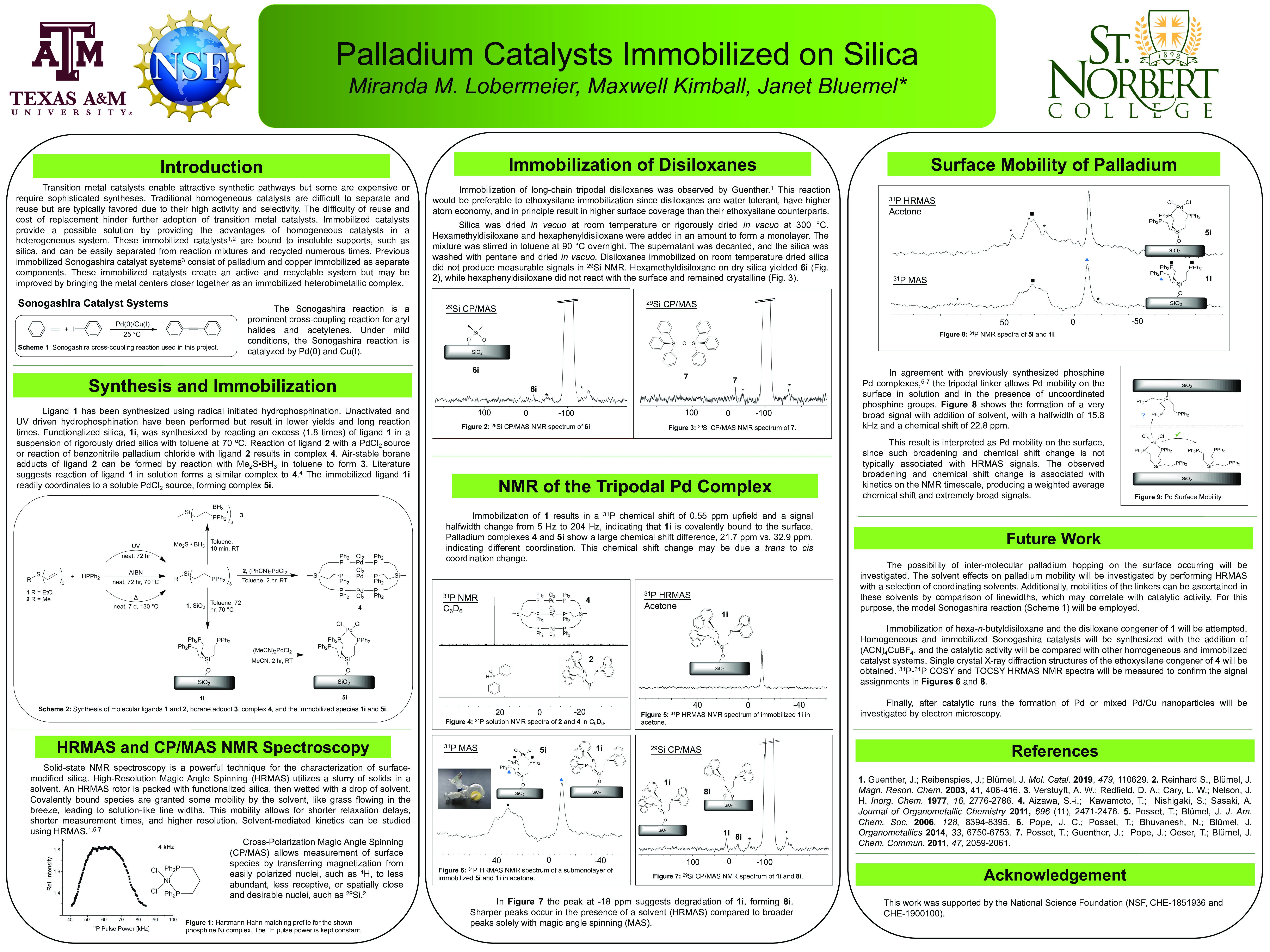Presentation Time: April 28
View Poster
Abstract
Catalysis is immensely important in academia and industry, as emphasized by the Nobel Prizes 2021 that were awarded to David MacMillan and Benjamin List for establishing the new field of organocatalysis. However, some organic catalysts require complicated syntheses, and most of the conventional transition metal catalysts are expensive. These factors often make it difficult to obtain the materials and resources necessary to carry out catalytic reactions. Immobilized metal catalysts are a potential solution to this problem by combining the high selectivity of homogeneous catalysts and the easy separation and recycling of heterogeneous catalysts. To create an ideal immobilized catalytic system, the homogeneous catalysts are bound covalently to insoluble supports, such as silica. Solid-state NMR spectroscopy is a powerful tool to study these materials and is used throughout this research. Past investigations have shown that separate palladium and copper components can be immobilized on silica using bifunctional phosphine linkers to create an active and recyclable Sonogashira catalyst system. The Sonogashira reaction is a prominent cross-coupling reaction for aryl halides and acetylenes. Here, we describe the palladium component of a surface-bound heterobimetallic palladium/copper complex, in which the turnover frequency (TOF) and number (TON) are expected to be higher than for previously reported systems with separate palladium and copper components. The palladium mobility on the surface in the presence of uncomplexed phosphine linkers is observed using 31P High-Resolution Magic Angle Spinning (HRMAS) NMR spectroscopy. Linker degradation pathways and surface bonding modes are studied using 29Si Cross-Polarization Magic Angle Spinning (CP/MAS) and 31P HRMAS NMR spectroscopy. Furthermore, the immobilization of disiloxanes on silica supports is investigated. Disiloxane immobilization is more favorable than ethoxysilane immobilization because the disiloxanes are water tolerant, have higher atom economy, and result in higher surface coverages than their ethoxysilane counterparts.



